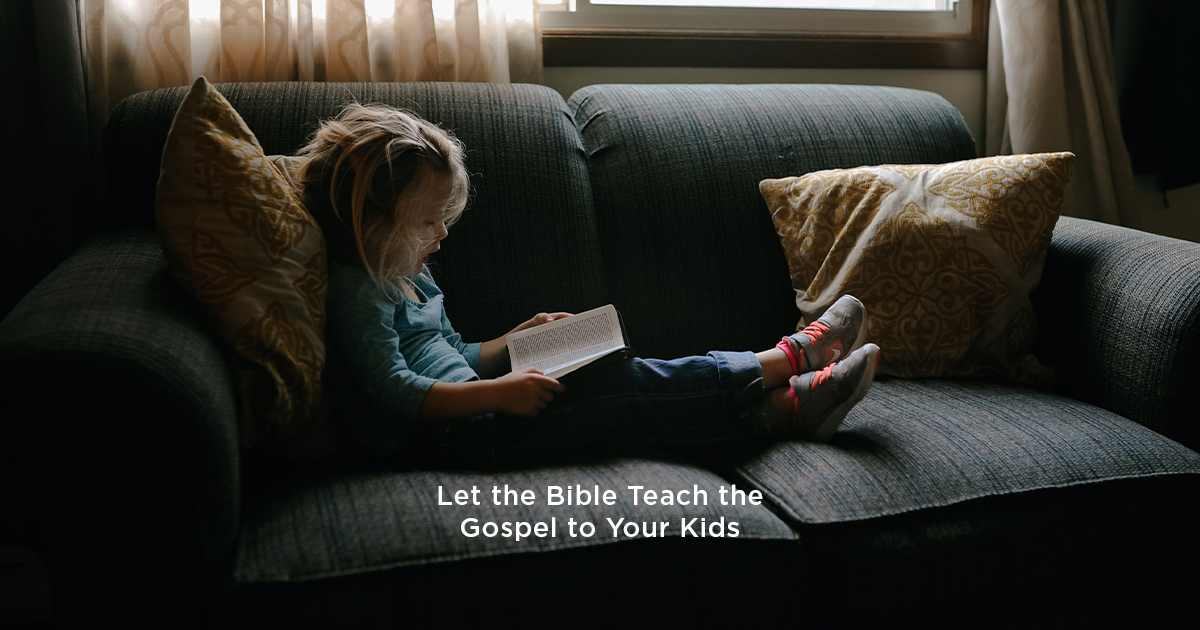
The gospel is simple enough for anyone to understand. It is also deep enough to spend a lifetime appreciating, and an eternity praising God for. And, when teaching the gospel to kids—whether it’s around your family’s table or in a kids Sunday school class or at VBS or anywhere else—perhaps the best way is to let the Bible do it. That is, rather than only giving our children a few memorable verses or a memorable visual or a story from a Gospel, we can give them what God has given us: the great sweep of the gospel story, from the Garden of Eden to the Garden-City of Revelation.
For most of us, our hearts are captured by stories rather than by propositions. (Think about your own childhood: I would guess you can remember the plots of your favourite books more than you can remember the rules of your school classroom.) So, in teaching the gospel to kids, let’s use the story God has given us—the greatest story and the truest story of all. Doing so will place the cross and resurrection in their place as the climax of God’s great plan, and will show children how, through repentance and faith, they can join into the great story that is still being written.
In teaching the gospel to kids, let’s use the story God has given us—the greatest story and the truest story of all.
Can kids understand the gospel in this way? Yes. Kids’ ability to understand the Bible is perhaps greater than we think. We tend to underestimate what they can get their heads around, while overestimating their ability to understand theological jargon. Better to teach deep truths in straightforward and engaging language, choosing one of the threads that runs through the Bible rather than asking them to wrestle with the whole tapestry.
For instance, we can tell kids the Bible’s story using the great thread of God’s presence with his people: intimately present in Eden, distanced by sin, restored at the cross, experienced through the coming of the Spirit, and gloriously fully and eternally enjoyed once more in the New Creation. That’s a story the youngest child can start to get their head around, and it’s one that we can communicate to older children by encouraging them to open up the Bible for themselves.
Not only does letting the Bible tell the gospel increase kids’ ability to understand the gospel itself, and to enjoy it, but it also gives them a sense that the whole of the Bible is for them, and enables them to locate where they are in the great story of redemption next time someone says to them, “Open up Isaiah” or “The Gospel of John says” (or even “Let’s look at 1 Chronicles” or “Today we’re in Nahum”!) In other words, we’re not just offering kids the gospel, we’re equipping them to read God’s word well for themselves.
Whatever age the child or children you have the privilege of sharing the gospel with, don’t underestimate those kids’ ability to understand the Bible.
I’ll assume you’ve read this far because you’re someone who has a heart for and the opportunity to teach the gospel to kids. Thank you! There’s nothing more precious than sharing the greatest truth in the universe with the next generation; and nothing more joyful than seeing the Spirit open their eyes to what it means for them. Here’s my encouragement: whatever age the child or children you have the privilege of sharing the gospel with, don’t underestimate those kids’ ability to understand the Bible. Do give them the gospel by telling them the great story of the Bible. Can kids understand the gospel? Yes. Can kids be excited about the gospel? Yes. And perhaps the best way to do that is in the way that God has given us: the story of the Bible, from garden to cross to eternity.
Take kids on a journey from the Garden of Eden to God’s perfect new creation to show them why Jesus died and rose again and why that’s the best news ever. The Garden, the Curtain and the Cross by Carl Laferton is available as a board book for 1-3s, a storybook for 3-6s, and a Sunday School curriculum for with age-differentiated lesson plans for 2-4s, 5-8s, and 9-12s. For 2-6s, God's Big Promises Bible Storybook also offers a firm foundation.